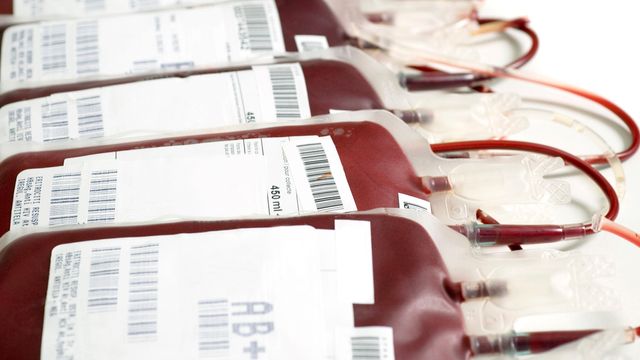Thank you. Listen to this article using the player above. ✖
Scientists from the University of Konstanz and Queen Mary University of London have identified a key molecular trigger that facilitates a crucial step in the formation of red blood cells.
The finding could advance research efforts into artificial blood production, the researchers say, though clinical applications remain distant.
The research is published in Science Signaling.
The role of CXCL12 in red blood cell formation
Red blood cell production, known as erythropoiesis, naturally occurs in the bone marrow. Stem cells mature into erythroblasts, which then develop into erythrocytes (red blood cells). In the final phase of this development, erythroblasts expel their nucleus, creating more internal space for hemoglobin – a protein that enables oxygen transport. This process is unique to mammals.
Although much is known about the maturation of stem cells into red blood cells, the mechanism prompting nuclear expulsion was unclear.
The research team, led by Dr. Julia Gutjahr from the Institute of Cellular Biology and Immunology Thurgau at the University of Konstanz, has identified that the chemokine CXCL12 can initiate this step.
“We discovered that the chemokine CXCL12 found mainly in bone marrow can trigger such nucleus expulsion, albeit in an interplay with several factors. By adding CXCL12 to erythroblasts at the right moment, we were able to artificially induce the expulsion of their nucleus,” said Gutjahr.
Mechanism reveals new function of chemokine receptors
The study found that CXCL12 interacts with red blood cell precursors differently than it does with other cell types. While other cells migrate in response to CXCL12, erythroblasts internalize the molecule, even transporting it into the nucleus. This internal action enhances cell maturation and assists in nucleus expulsion.
The research suggests that chemokine receptors may have intracellular roles in addition to their established function on the cell surface and may inform future techniques for improving the efficiency of artificial blood production.
“Importantly, apart from immediate practical application for the industrial production of red blood cells, our results brought a completely new understanding of cell biological mechanisms involved in erythroblast responses to chemokines,” added senior study author Antal Rot, a professor of inflammation sciences in the William Harvey Research Institute at Queen Mary University of London.
“While all other cells migrate when stimulated by CXCL12, in erythroblasts this signalling molecule is transported into the interior of the cell, even into the nucleus,” Rot continued. “There, it accelerates their maturation and helps to expel the nucleus. Our research shows for the first time that chemokine receptors not only act on the cell surface but also inside the cell, thus opening entirely new perspectives on their role in cell biology,”
Challenges in sourcing cells for artificial blood
Artificial blood production typically starts with stem cells derived from umbilical cord blood or bone marrow. These cells can achieve nucleus expulsion in approximately 80% of cases. However, the limited availability and high demand for these cells makes this approach insufficient for large-scale applications.
Recent advancements in cell reprogramming have allowed for the transformation of other cell types into stem-like cells, which can then be guided to produce red blood cells. Yet, this method is slower and less efficient, with successful nucleus expulsion occurring in only 40% of cases.
“Based on our new findings highlighting the key role of CXCL12 in triggering nuclear expulsion, we can expect that using CXCL12 should bring significant improvement in producing red blood cells from reprogrammed cells,” said Gutjahr.
The research team hopes that new advances aiding large-scale artificial blood production could lead to immediate, meaningful improvements for patients.
“Even though body cells are readily available, the lab-based production process will remain complex. But it would enable the targeted generation of rare blood types, help bridge shortages or allow individuals to reproduce their own blood for specialized treatments in many different diseases,” said Gutjahr.
Reference: Gutjahr JC, Hub E, Anderson CA, et al. Intracellular and nuclear CXCR4 signaling promotes terminal erythroblast differentiation and enucleation. Sci Signal. 2025;18(891):eadt2678. doi: 10.1126/scisignal.adt2678
This article has been republished from the following materials. Note: material may have been edited for length and content. For further information, please contact the cited source. Our press release publishing policy can be accessed here.
This content includes text that has been generated with the assistance of AI. Technology Networks’ AI policy can be found here.
